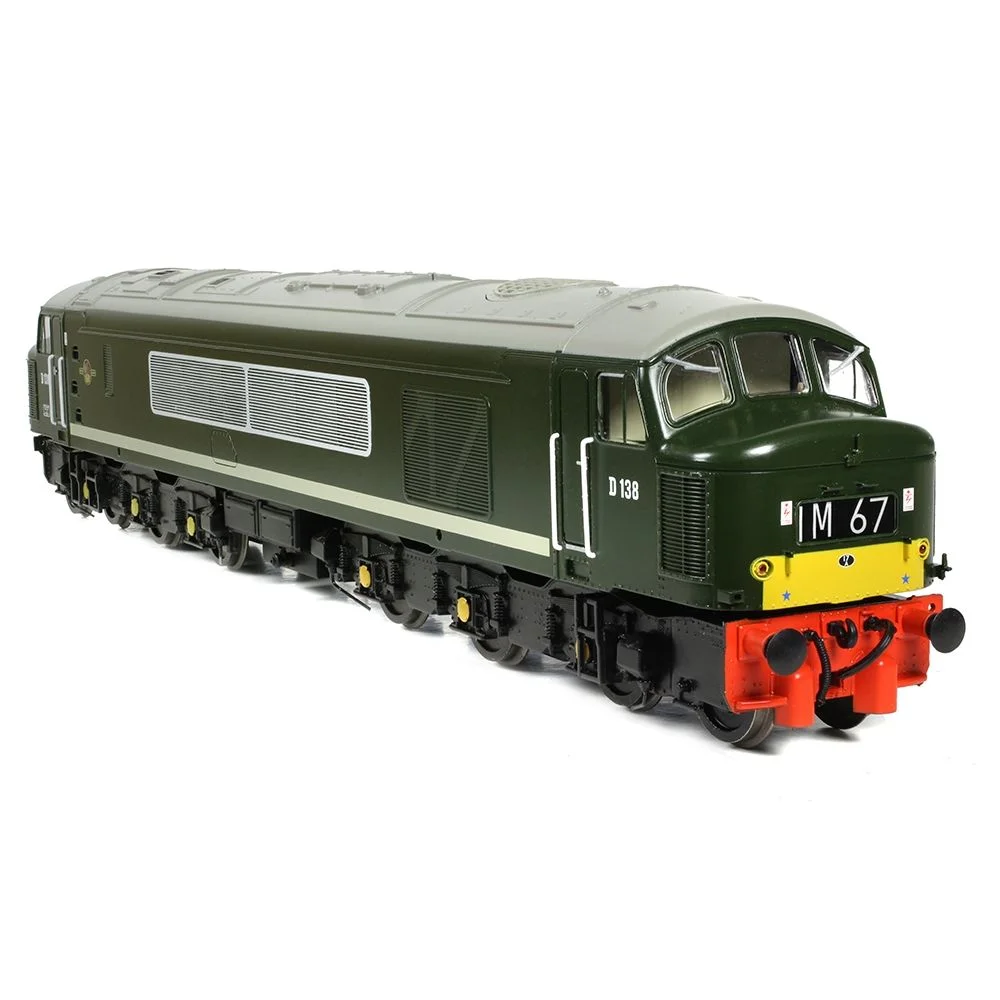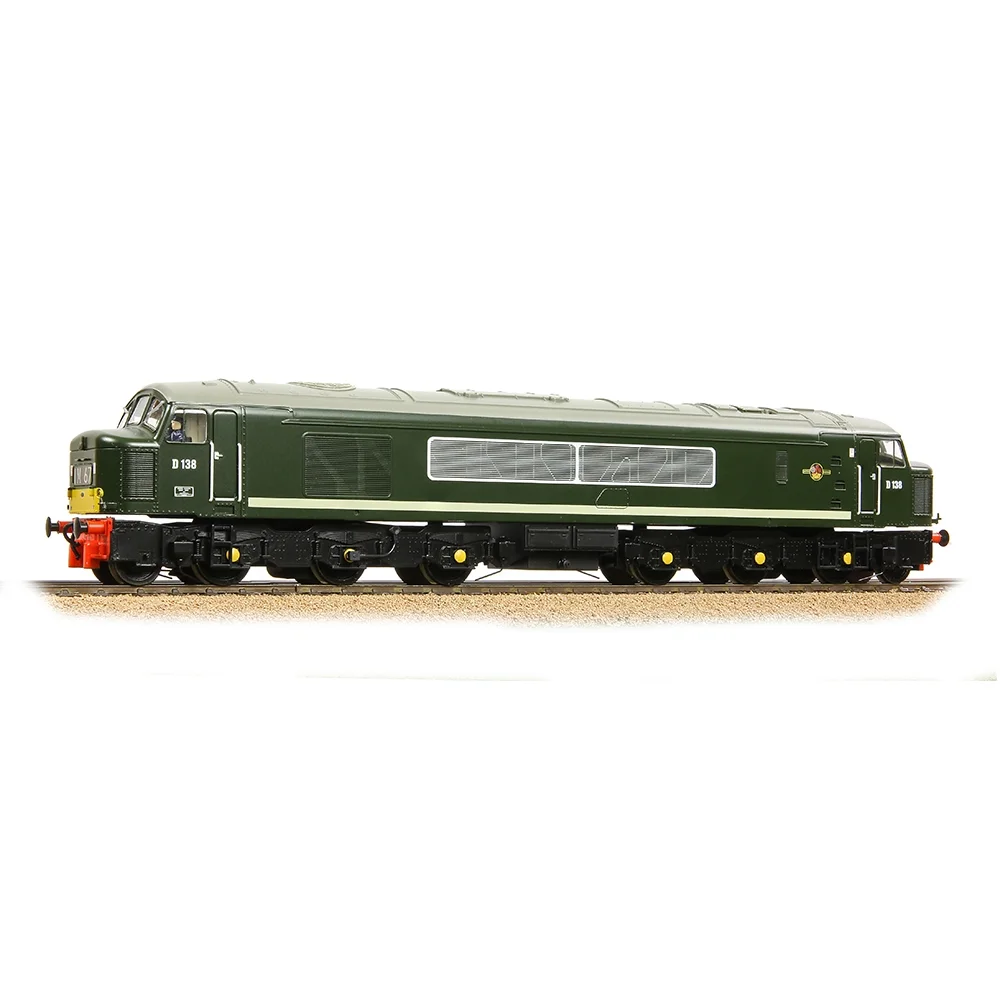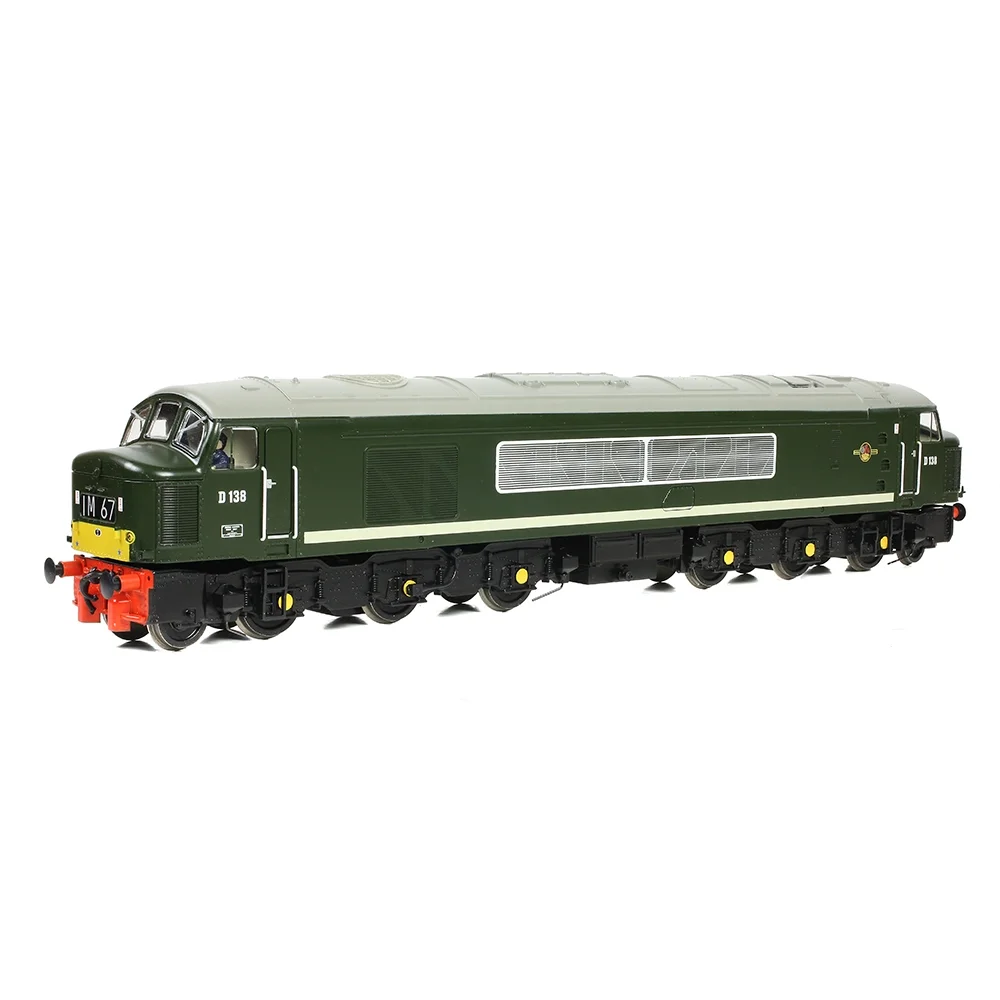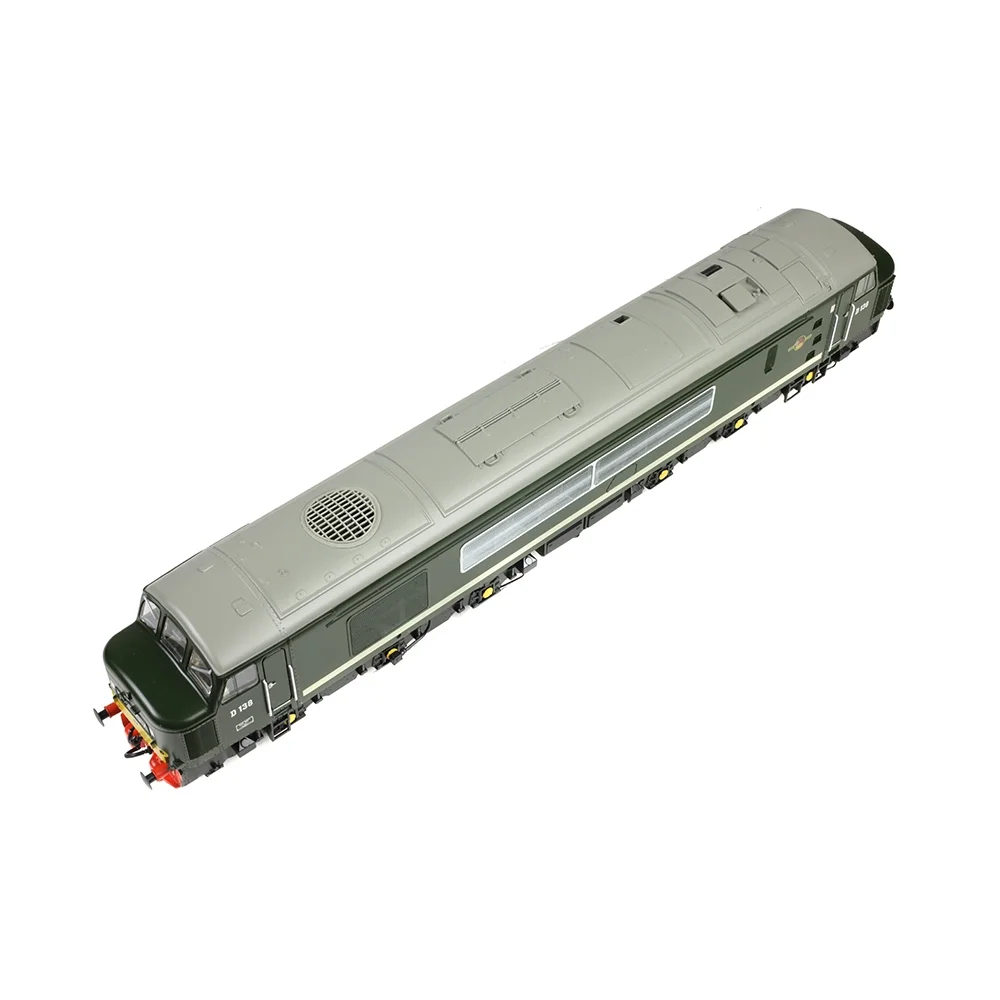Bachmann 32-702A
British Rail Class 46 D138 British Railways Green
Bachmann's Description & Specifications
The popular Class 46 Diesel Locomotive returns to the Bachmann Branchline range with this OO scale model depicting No. D138 in BR Green livery with Small Yellow Panels. Together with the Class 44s and 45s the classes were commonly known as the ‘Peaks’, because the Class 44s had been named after mountains in England and Wales, however all but one of the 56 Class 46s went unnamed.
- Bachmann Branchline OO Scale
- Era 5
- Pristine BR Green (Small Yellow Panels) livery
- Running No. D138
- Centre Headcode Panels displaying headcodes 1M67 and 1N37
- NEM Coupling Pockets
- Sprung Buffers
- Powerful 5 Pole Motor with Twin Flywheels
- Detailed Cab Interior with pre-fitted Driver in one cab
- Directional Lighting
- Locomotive Ready to Accept a Speaker
- Accessory Pack
- Equipped with a 21 Pin DCC Decoder Socket – recommended Decoder item No. 36-557A
- Length 275mm
Class & Prototype
- Class: British Rail Class 46
- Traction: Diesel
- Transmission: Electric
- Built: 1961-1963
- Total Built: 56
- Running Number: D138
The British Rail Class 46 comprised 56 Sulzer Type 4 diesel-electric locomotives built at Derby Works 1961-1963 (numbered D138-D193, later 46001-46056). Distinguished from the otherwise identical Class 45 by Brush electrical equipment rather than Crompton Parkinson systems, the class served 23 years on express passenger and heavy freight duties including the famous Cornwall-Staffordshire china clay trains. The unique Brush equipment validated through Class 46 service directly enabled the successful Class 47's development. Withdrawn by Christmas Day 1984, only three locomotives survive in preservation (5.4% survival rate). Available in OO gauge from Bachmann and comprehensive new N gauge range from Rapido Trains UK (2025).
Operator & Livery
- Operator: British Railways
- Livery: Green
- Era: 5 - British Railways Late Crest
British Railways transformed Britain's fragmented rail network into a unified national system following nationalisation on 1st January 1948. Created from the "Big Four" companies under the Transport Act 1947, BR operated most of Great Britain's railways until rebranding as British Rail in 1965, managing over 20,000 route miles and inheriting nearly 20,000 locomotives of diverse designs.
The organisation pioneered standardisation through its revolutionary BR Standard locomotive programme (1951-1960), producing 999 advanced steam engines under Robert Riddles' direction. These included the versatile Britannia Pacifics, mighty 9F freight engines, and mixed-traffic classes that incorporated the best features from all predecessor companies. The 1955 Modernisation Plan accelerated diesel and electric traction development, creating fascinating mixed-traction operations.
Notable achievements included establishing unified locomotive classification systems, introducing distinctive corporate liveries, and managing the complex transition from steam to modern traction. BR's six regional structure preserved operational diversity whilst enabling standardisation of practices, signalling, and rolling stock that had eluded private enterprise for over a century.
The BR era represents steam traction's final flowering alongside emerging diesel technology, creating unparalleled locomotive variety. Today, this heritage remains highly popular with railway enthusiasts through extensive preserved fleets, heritage railway operations, and comprehensive model ranges from manufacturers like Hornby, Bachmann, and Dapol, making BR subjects essential for authentic post-war British railway modelling across all scales.



